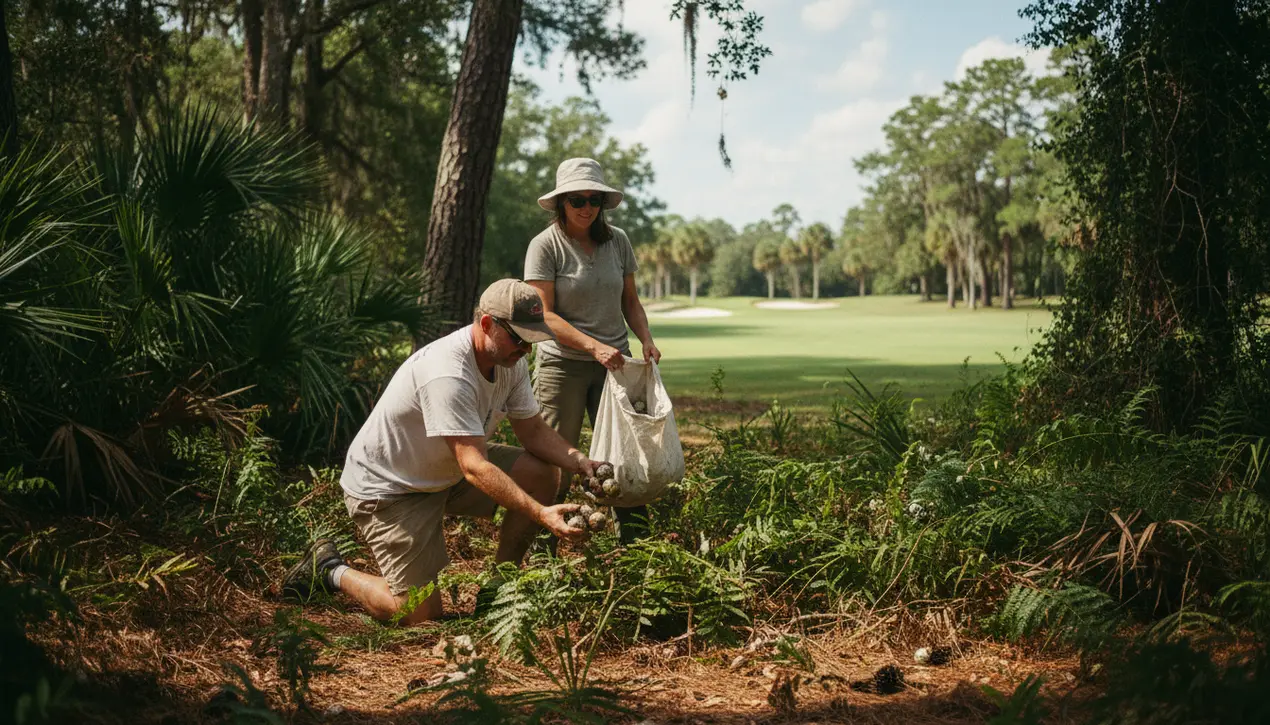
Financefintech & paymentsDigital Wallets
How one couple turned found golf balls into Stacked Golf
LI
Liam Brooks
8 hours ago7 min read2 comments
Jon Armstrong never planned to build Stacked Golf, the live-commerce platform now generating $150,000 a week. It all started with a simple ultimatum from his wife, Ashley: he could join the local golf club, but he had to pay for it himself.With zero budget and no business plan, Armstrong’s only move was to start a YouTube channel reviewing golf balls. The catch? He couldn’t even afford to buy balls, so he scavenged the woods at his Daytona Beach course, comparing found Titleist Pro V1s against whatever else he dug out of the rough.It was the ultimate side hustle, born from pure necessity. Within two months, the channel was monetized; within six, it was their full-time gig.Fast forward to today, and Stacked Golf’s YouTube has 325,000 subscribers, while their marketplace, launched just six months ago, is approaching $3 million in total sales. It’s a classic case of the underdog story, the kind you’d see in a sports movie montage—except this is real life.The real game-changer came when Ashley brought her thrifting expertise into the mix. Together, they became the 'American Pickers' of golf, driving through Central Florida hunting for that $400 putter sitting in a Goodwill for three bucks.But the polished videos hid the grind. 'For every one thrift store we show you, we’ve probably been to like 15,' Armstrong admits.They wore the same clothes for days just to piece together a 10-minute video. As their community grew organically over three years, they hoarded inventory, frustrated with eBay’s fees and soulless transactions.The breakthrough came on the golf course, of all places. Playing a round with another YouTuber, Commonwealth Picker, Armstrong learned about District, a platform that provides the tech infrastructure for custom marketplaces.As a former app developer, he recognized the value instantly: 'The technology stack they give you is millions of dollars. ' It was a shortcut that let them focus on community, not code.Founded by ex-Snapchat builders and backed by heavyweights like Andreessen Horowitz, District offered a lean alternative to giants like Whatnot, which has soared to an $11. 5 billion valuation.While Whatnot built a centralized bazaar, District lets creators like the Armstrongs build their own branded ecosystems. Stacked Golf isn’t just selling on someone else’s platform; they’ve built their own mini-eBay for golf, complete with timed auctions that are pure adrenaline.Sellers host livestreams, hold up a club—say, a Nike Method Core putter—pitch it, and start a 10-second countdown. Last bid wins.It’s fast, chaotic, and incredibly effective, with 98% of sales coming from these live sessions. One seller pulled a nine-and-a-half-hour marathon, racking up nearly $20,000.Another, Play It Again Sports, made $17,000 in two hours—more than their usual weekly take. This taps into why live commerce conversion rates can be 10 times higher than traditional e-commerce: urgency, entertainment, and real interaction.But Armstrong’s secret sauce isn’t just the format; it’s curation. Every seller is preapproved, products are verified, and gimmicks are banned.He prefers passionate collectors over cold arbitrageurs, citing Nike club specialists who thrive on knowledge, not just margins. The vibe is community over commerce, and it’s working.The marketplace exploded from zero to 26,000 members in six months, with individual sellers clearing $150,000 in personal sales. They’ve outgrown their 2,500-square-foot Florida warehouse and attracted brand deals, but Armstrong remains wary of corporate sellers killing the authentic feel.The timing is impeccable. In the U.S. , live commerce is just 5% of e-commerce, compared to China’s 60%, suggesting massive growth ahead.Platforms like TikTok Shop and Whatnot are pushing the trend, with TikTok hosting over eight million hours of live sessions in 2024 alone. District’s infrastructure democratizes this, letting creators launch sophisticated marketplaces overnight.For the Armstrongs, it’s still surreal. From scrounging for balls in the woods to running a multi-million-dollar platform, their journey underscores a fundamental shift: authentic community-building can trump traditional business plans.They started with a bet, a phone, and a genuine love for the hunt. As Armstrong puts it, 'It just grew naturally, which I think people appreciated.Even to this day, it’s kind of clear that it ain’t all about the money. ' And in a world of hyper-commercialized sports, that authenticity might be their most valuable asset.
#weeks picks news
#live commerce
#e-commerce
#golf marketplace
#Stacked Golf
#District platform
#entrepreneurship
#YouTube creators
Stay Informed. Act Smarter.
Get weekly highlights, major headlines, and expert insights — then put your knowledge to work in our live prediction markets.
Comments
Loading comments...
© 2025 Outpoll Service LTD. All rights reserved.